Donald Fieldhouse Interview | ||||||||||||||||||||||||||||||||||||||||
January 30, 2014 | ||||||||||||||||||||||||||||||||||||||||
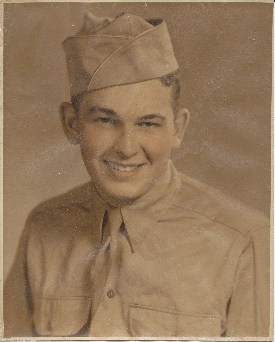 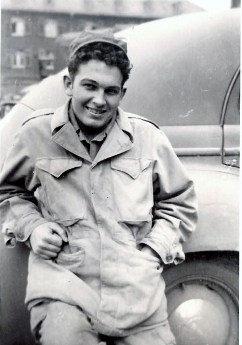 | ||||||||||||||||||||||||||||||||||||||||
Donald J Fieldhouse, originally from Wisconsin, served in Company B of the 1270th Engineer Combat Battalion during WWII. | ||||||||||||||||||||||||||||||||||||||||
After the war, he returned to college and got his BS, MS and PhD in Agricultural and Horticulture at Wisconsin-Madison. Donald taught for 30 years at the Univ. of Delaware and is now retired. | ||||||||||||||||||||||||||||||||||||||||
Question: Did you enlist? | ||||||||||||||||||||||||||||||||||||||||
Don enlisted and was first placed in the Army Specialized Training Program (ASTP). | ||||||||||||||||||||||||||||||||||||||||
He was then sent to the University of Illinois for a couple of months, and afterwards to Fort Bragg, Georgia, to train for the infantry with the 100th division which was being formed. The 100th had too many men, so Don was finally sent to Camp Chaffee, Arkansas as part of a cadre of officers and joined the 1270th. | ||||||||||||||||||||||||||||||||||||||||
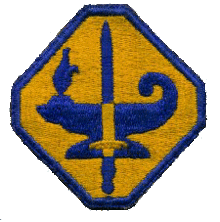 | ||||||||||||||||||||||||||||||||||||||||
ASTP patch | ||||||||||||||||||||||||||||||||||||||||
(ASTP was a military training program instituted by the United States Army during World War II at a number of American universities to meet wartime demands for junior officers and soldiers with technical skills. The purpose of the program was "to provide the continuous and accelerated flow of high grade technicians and specialists needed by the Army - wikipedia) | ||||||||||||||||||||||||||||||||||||||||
Question: Did you travel on the Sea Owl to England? | ||||||||||||||||||||||||||||||||||||||||
"It was a tremendous trip. We were in a convoy of 1000 ships. Ships as far as you could see." The ships were so close that he wondered how they did not crash into each other. So close you could almost step from one to another.
They were headed for the south of France but along the way were attacked by submarines. The convey split in two to avoid the submarines and one half went to England instead. The battalions that were part of the 100th division went to the south of France. Those divisions suffered hard and lost many men right away. Some of the men from the 1270th had been part of the 100th initially and volunteered to go back to the 100th; all those were killed. | ||||||||||||||||||||||||||||||||||||||||
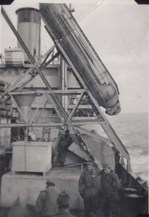  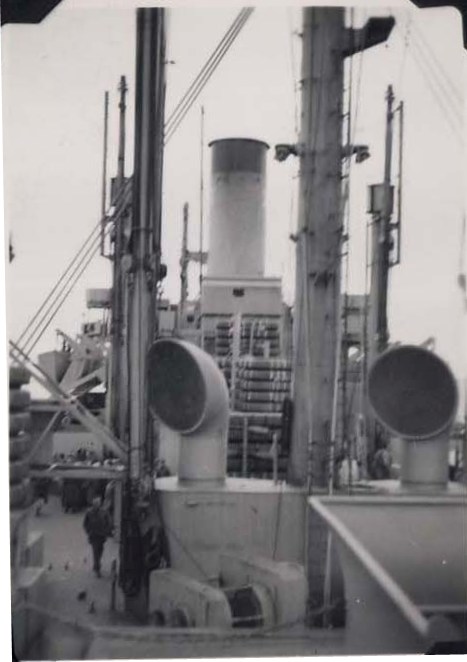 | ||||||||||||||||||||||||||||||||||||||||
The Sea Owl crossing the Atlantic | ||||||||||||||||||||||||||||||||||||||||
Question: When did you hear about D Day? | ||||||||||||||||||||||||||||||||||||||||
"It was expected, not really a surprise." | ||||||||||||||||||||||||||||||||||||||||
Question: How he was received by the British? | ||||||||||||||||||||||||||||||||||||||||
Don said he only knew a few women. There were a couple of pubs near the hotel where they were billeted. He met a girl from the air force. He walked into the pub for the first time and stepped into the lighted room and tripped over her suitcase that was how they met.
She was billeted at an air force base, not far from WSM. Her name was Murial Hurfurd. Once she really got mad at Don. She was 5 years older and thought that she and Don were going to get married, that she would then go to the US with him. She wrote to Don all through the war. When he got back home, he wrote to her and told her that he was not interested in getting married; he was going to school and was not ready; then she got really mad at him. | ||||||||||||||||||||||||||||||||||||||||
Question: Did the GIs have nylons and chocolates to give out? | ||||||||||||||||||||||||||||||||||||||||
Don said was not given these things. The only time he had chocolate was on Christmas Eve when he went to the USO which was closed. Instead they went to the British USO where they had chocolate. | ||||||||||||||||||||||||||||||||||||||||
Question: Where were you billeted in W-S-M?"We were billeted in small hotels close to the water. The only thing between the hotel and the sea was a nice garden." They were there from December to February so missed the summer weather in the resort town. They had one big snow storm, the 1st snow in 33 years. All the girls in town got hold of dust pans to coast down the hills on the snow. Bunches of kids threw snow balls at the soldiers who broke ranks and played with the kids in the snow - big snow ball fights. Don still has a postcard from the hotel.  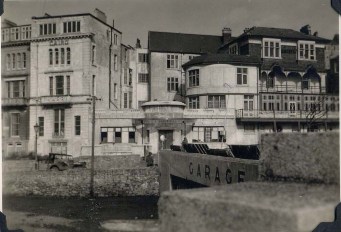 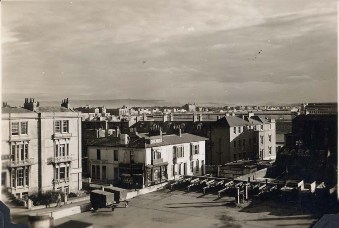 l to r - A small hotel in WSM, The Cairo Hotel where Joe Turner was billeted, View from the Cairo of the sea. Question: Have you been back to WSM?Don said he has been back to England for different conferences but never back to WSM.
He did not have a camera while he was there so he could not take photos.
One week before they left for Europe, one exciting thing happened, he got a phone call from his cousin Bud who was stationed 200 miles away in East England. Bud was a pilot and flew his plane without permission to a nearby a landing strip. Don borrowed a bike and rode to see his cousin for the 10 minutes he had there. Don wrote a article about the incident with his cousin that was published in a Wisconsin History Journal. He and his cousin often laughed about this after the war. Sgt. George Hornsby and Sgt. Cole (2 soldiers in B Company)were good friends. They were both promoted to "buck" sergeant but took demotions because they did not want to be responsible for a squadron, being responsible for 12 military men day in and day out.
Head Quarters and Company B did not mingle, all men trained in their individual company and platoon. Missions were by company. Question: What kind of training did they receive?They were trained to build Bailey Bridges. They built one bridge in England before going to Europe but primarily took down bridges that crossed the Rhine. B Company only built one bridge in Europe. Don remembers that C Company dumped one of their bridges into the river by mistake.
Bailey Bridges are built with a counter balance. They would fire a rifle to see the distance of the bridge. The most dramatic bridge they built was a pontoon bridge. They had never seen one before and had no tools to do this. The rolled the bridge into place using pick handles. Patton was anxious to get the bridge done and made them his personal engineers after seeing the pontoon bridge. Company B was directly under Patton, for whom they did a lot of cleaning up. Don never saw Patton himself. They practiced river crossing on the Thames. They stretched a rope across and tried to cross with a row boat. The current was moving at 12 to 15 miles per hour.     Bridge builting by the 1270th Question: Did you return with the company to the US?After the war Don came back on a ship and was stationed at Camp Tilmore. He got to go home on furlough but then had to report to Fort Benning, Columbus, Georgia. He did not have enough points for a discharge.
He used the GI bill for 5 years in college and earned a PhD in Agriculture.
When they left Europe they knew the ship was going to the US. He had studied Japanese in anticipation of going to Japan. They had initially been designated to go to Berlin for the occupation. Question: How was the voyage back to the US?They were the last group to get on the boat. They were told to wait on deck until bunks could be assigned.
They spent the next two days sleeping on the deck. They never got assigned bunks and spent the entire two weeks on deck. Even during a big rain storm. He slept near the railing the first night and hooked himself to it with his cartridge belt. They then tried sleeping in the gun turret but found that the rain got in.
All in all, it was a great trip. The entered the Sargasso Sea and went straight through. The sea was green as far as the eye could see. He wrote a story about that too that got published. We were all alone only seeing porpoises, flying fish, whales and a three masted schooner. At night they saw the phosphorescent organism light up the ocean. Question: Did they see the I G Farben building in Frankfurt?The I G Farben building that we cleared out was not that new looking one, but an older one right in Hochst, Germany, next the the school that we were staying in.  IG Farben Casino in Hochst According to the National Archives information, the 1270th supervised the clearing out the IG Farben building by 500 prisoners of war who did the clearing. They stayed in a town called Hochst near Frankfurt. (Background from Wikipedia - The IG Farben Building or the Poelzig Building was built from 1928 to 1930 as the corporate headquarters of the IG Farben conglomerate in Frankfurt am Main, Germany. It is also known as the Poelzig Ensemble or Poelzig Complex, and previously as the IG Farben Complex, and the General Creighton W. Abrams Building. The building's original design was the subject of a competition which was eventually won by the architect Hans Poelzig.
On its completion, the complex was the largest office building in Europe and remained so until the 1950s. The IG Farben Building's six square wings retain a modern, spare elegance, despite its mammoth size. It is also notable for its paternoster elevators.
The building was the headquarters for research projects relating to the development of Nazi wartime synthetic and rubber, and the production administration of magnesium, lubricating oil, explosives, methanol, and Zyklon B, the cyanide-based pesticide that was later used by the Nazi regime to generate the lethal gas used in concentration camps. After WWII, the IG Farben Building served as the headquarters for the Supreme Allied Command and from 1949 to 1952 the High Commissioner for Germany (HICOG). It became the principal location for implementing the Marshall Plan, which largely financed the post-war reconstruction of Europe. The state apparatus of the Federal German Government was devised there. The IG Farben Building served as the headquarters for the US Army's V Corps and the Northern Area Command (NACOM) until 1995. The US Army renamed the building the General Abrams Building in 1975. 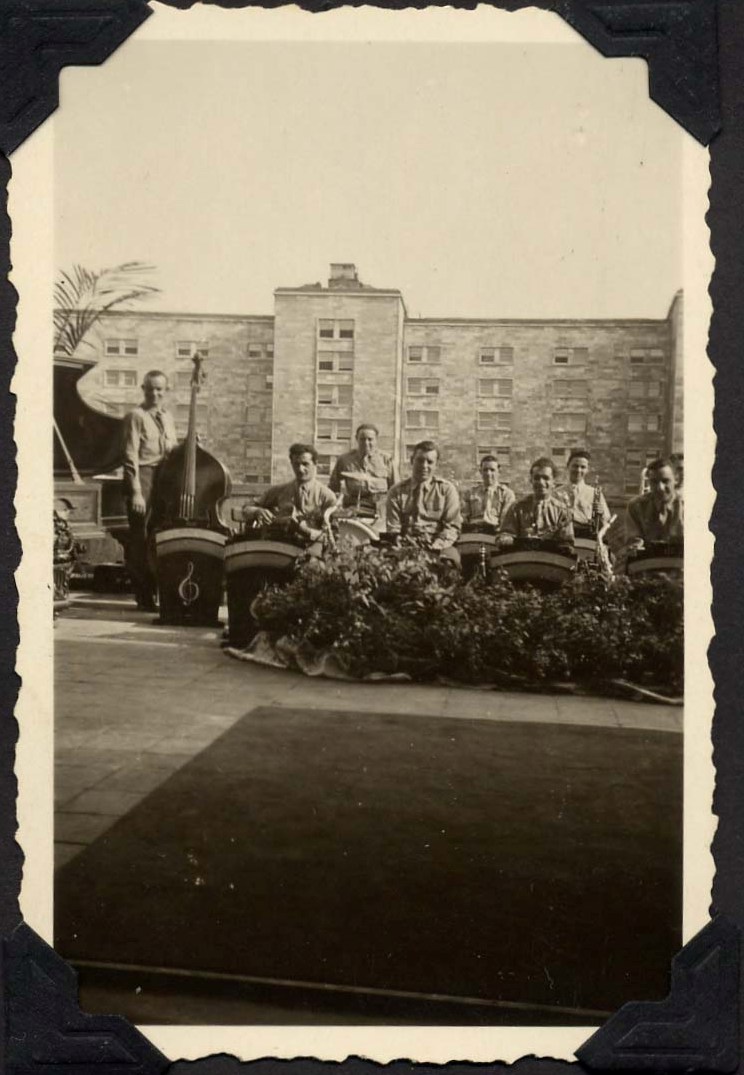 Military band in front of the Ike's headquarters, possibly the I G Farben building. Photo taken by Joe Turner Question: Did you see Buchenwald, the concentration camp that the unit liberated?They were all supposed to tour the camp and write a letter about it to their parents. He went with some others and they did not have a map and had bad directions, they drove around for one hour and never found it and he never saw it. He wrote a letter back to his parents about it anyway.
(note - this is probably why Fred Diamond wrote the letter home to his parents about Buchenwald which was published in the book - Letters of the Century) 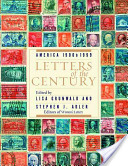 Question: Were you aware of the three men killed in the unit?Only one man was killed. The official record was that they were on reconnaissance but actually a colonel wanted pancakes and they went out in a 3/4 ton truck to get pancake flour. The truck went off the road and crashed down in a valley, killing the driver instantly. The other two were trapped in the truck for three days before they got out alive. 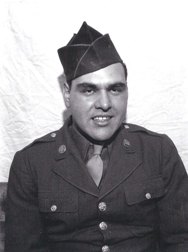 Driver of the car hit in the ambush Question: Where were you when the War ended?The end of the war was called E Day. We were on the way to Czechoslovakia headed for Prague. They ran into a Russian unit going the other direction, the road was only wide enough for one unit to pass. They Russians won so Company B turned around and went back to allow the Russians to get where they were going. Question: Did you keep in contact with any men from the unit?He did not keep in contact with any men. They were mainly from Arkansas and Louisiana. Question: Are there any men still alive from the unit?Don feels that they certainly are. But he does not know of any. 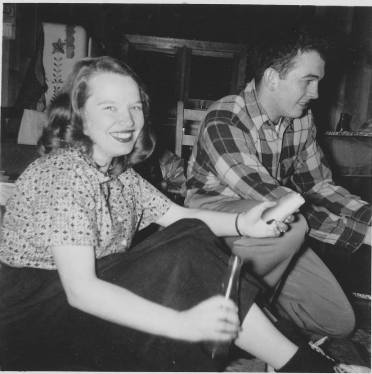 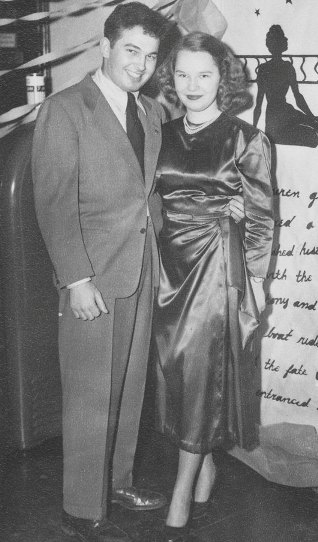 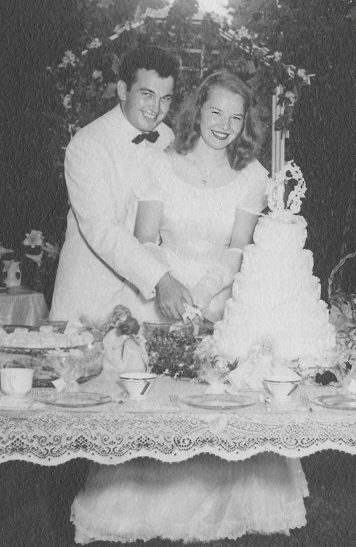  Don and his wife after the war. |